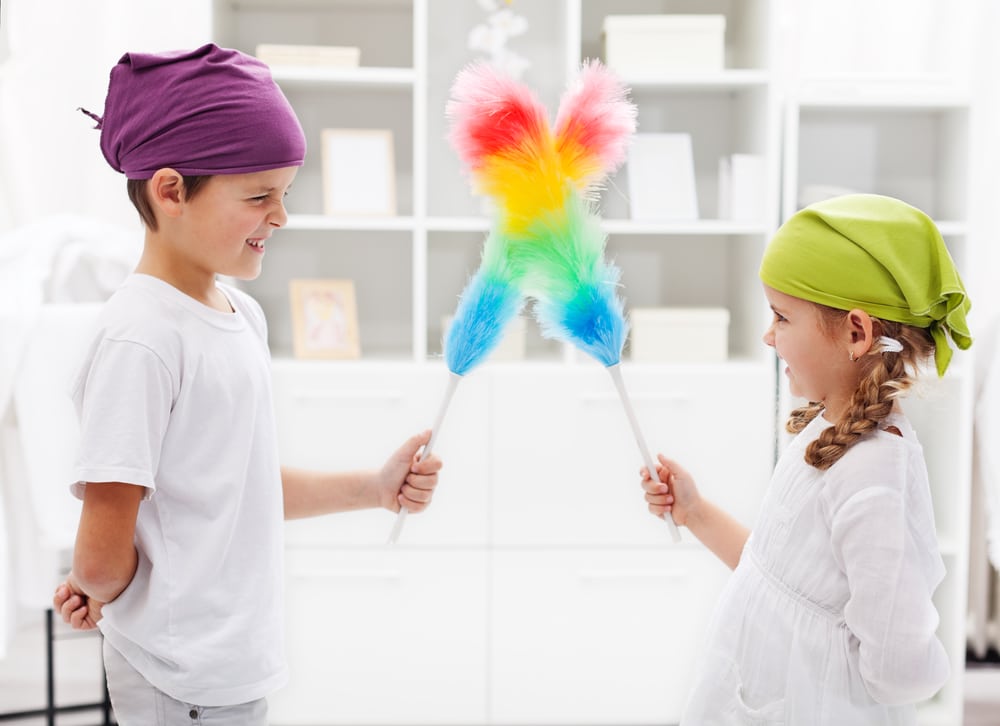5 Ways to Make Chores Fun for Preschool Age Children
Involving children in household chores at the preschool age has many potential benefits. Gaining a sense of responsibility, independence, self-reliance, and empathy are just a few of the developmental breakthroughs that can occur as a result of your children participating in their household chores. Not only will it help you out by having one less thing on your to-do list, but it will help your preschool age children learn skills that will last a lifetime, including time management, task prioritization, and basic organization techniques.
Luckily, chores don’t have to be a drag! You can turn them into fun games and activities that your preschooler will love! Here are a few ideas that will get preschool age children started on their chores:
- Play the Freeze Dance Pick Up Game. Children at the preschool age are old enough to put away their own toys, but most kids don’t have as much fun putting them away as they did taking them out. The solution is turning this tidying up chore into a fun and interactive game of freeze dance. Blast your child’s favorite upbeat song as they dance and put as many toys away as possible while the music plays. When the music stops, well – you know the drill.
- Film a cleaning commercial. Whip out your smartphone or video camera next time there’s a spill and tell your kids that they are going to be the star of a new cleaning commercial! Hand them a wet towel and the cleaning product in a spray bottle (of course you’ll want to make sure that it’s a gentle one without any strong chemicals or fumes) and start filming away as they wipe up that mess!
- Kick off a laundry race. Make sure you have a few laundry baskets ready because your children will be eager to play this cleaning game. Blow your whistle and shout whites, colors, or darks! Your children will be racing to their rooms as fast as they can to grab their dirty laundry and come back with the color that you requested.
- Play cleaning Jenga. Here’s where you can really get creative by writing an age-appropriate chore on the side of each log in the Jenga stack. Your child will be directed by the cleaning activity written on the side of the log that caused the stack to fall.
- Hold a tidying contest. This one is all about speed. Who can tidy up their mess the fastest? You can make a scoreboard. Record all the times and give them the opportunity to beat their previous times, or the times of their friends and siblings. This is a great way to incorporate a little friendly competition and get the job done fast!
How Chores Help the Learning Process at the Preschool Age
At Carpe Diem Private Preschool, we use an interdisciplinary approach to learning in which children learn through doing and reflecting. Our experiential learning process helps children build character and leadership, as well as gross motor skills. We believe that involving your preschool age child in chores at home is a great way to continue this experiential learning process outside of the classroom environment.



